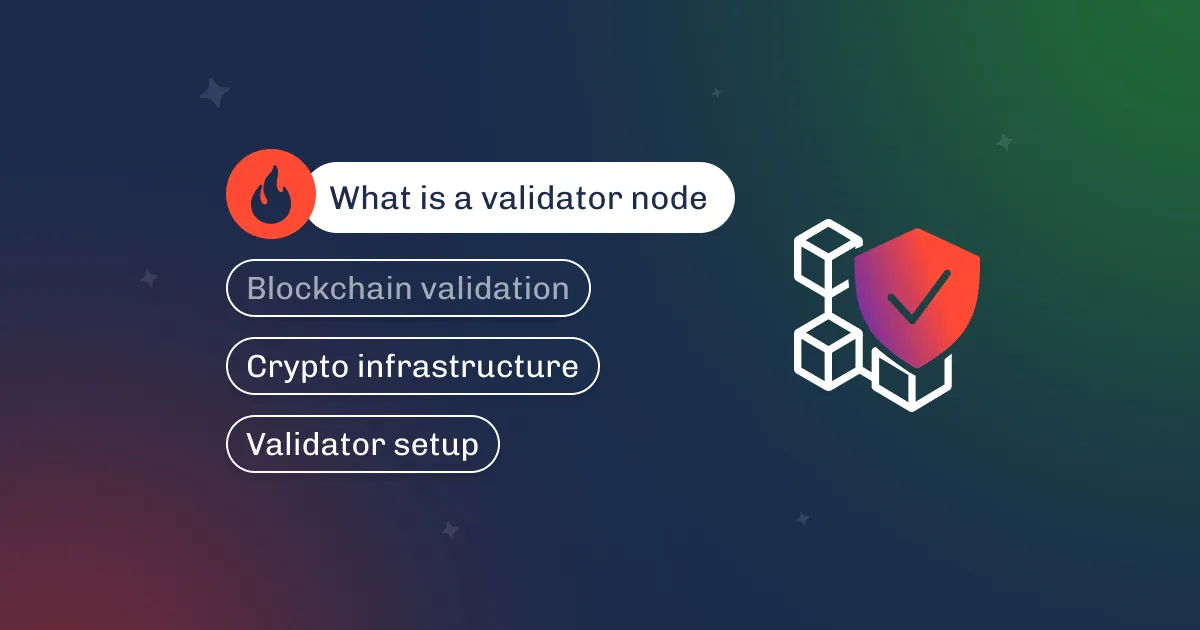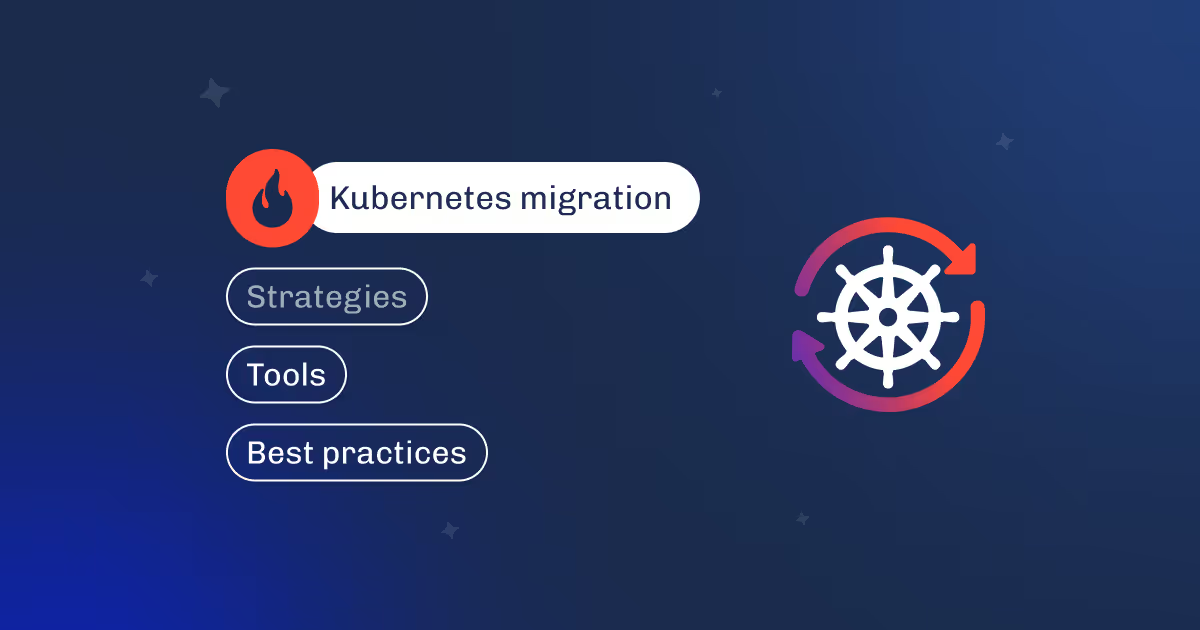.avif)

Have you ever been to Tokyo? The first thing that mesmerized me was the way the subway works (yes, this tautology was made on purpose :) ). This time-obsessed organization of personnel, trains, passengers, its cleaning routine, arrivals, departures based on strict discipline is one of the most important infrastructure arteries of the non-sleeping Tokyo-san. I imagined the whole city wrapped up in the perpetually working net, reminding me of blockchain networks.
In particular, all this subway thing is the perfect analogy for the “blockchain-Kubernetes” relations. Such a complex distributed system needs to be synchronized at each knot, each station, and within each train with zero latency. It needs a special management style that assumes strict rules yet freedom to act. K8s works here as both a communication system for dispatchers, a service delivery rulebook, and a technical guide for the infrastructure of rails, trains, etc.
So, since you’re reading a Dysnix blog, not my imaginary travel blog, we’ll explore the theme of blockchain and Kubernetes in more detail. We’ll examine the most popular cases from the Dysnix portfolio to discover how Kuber solves the challenges of decentralized applications.
Blockchain networks are a symphony of components—validator nodes, smart contracts, consensus mechanisms—each playing a crucial role. Traditionally, deploying and managing these components and manually managing the version repository was a manual slog.
We get used to imagining the blockchain as an immutable, secure, decentralized, and distributed system, but nobody asked what it costs to make it this way. From the hardware basis—to the extra layers of applications and APIs, each blockchain network or application built on top of it go through the same procedure of deployment, launch, maintenance, and support. Managing those distributed ledgers can be a nightmare of sprawling deployments, manual scaling, and constant monitoring. So, to keep everything working before the k8s appeared, much manual work was required for the fabric network.
It took hours for operations that require seconds today, thanks to k8s.
Kubernetes makes the operational routine simpler, faster, and more controllable. Later, your system becomes more self-sufficient, and you just spend time observing it working with no failure.
This is a DevOps dream. With K8s, we can wrap all blockchain components into containers, lightweight, portable units that package everything an application needs to run. Imagine deploying your entire blockchain network with a single YAML file using kubectl apply -f my-blockchain.yaml. Boom!
Your validator nodes are up and running across your Kubernetes cluster, pre-configured with the right resources. Need to add a new smart contract? Just build a new container image and deploy it alongside the others. K8s handles the heavy lifting, ensuring consistency and repeatability across deployments.
Here's an example of a code snippet for a basic Kubernetes deployment of a validator node:
YAML
apiVersion: apps/v1
kind: Deployment
metadata:
name: validator-node
spec:
replicas: 3 # Scale your validator nodes easily
selector:
matchLabels:
app: validator-node
template:
metadata:
labels:
app: validator-node
spec:
containers:
- name: validator-node
image: my-validator-node:latest # Replace with your image
ports:
- containerPort: 8080
resources:
requests:
cpu: 100m
memory: 256MiIt’s that easy, just a few lines of code. This example of a validator node deployment reminded me of our Nansen case that used k8s:

Blockchain traffic can be unpredictable. One minute, it's a trickle of transactions, the next, it's a tsunami. Manually scaling validator nodes to keep up is a recipe for burnout. K8s to the rescue! We can define Horizontal Pod Autoscalers (HPA) that automatically adjust the number of validator node replicas based on predefined metrics like CPU usage or transaction volume.
Imagine a scenario where transaction volume spikes. The HPA detects the increased load and automatically spins up additional validator nodes to handle the surge. Once the traffic subsides, the HPA scales down the nodes, saving precious resources. This kind of intelligent scaling keeps your network performant and cost-effective.
Stuff happens. Nodes crash, containers fail. But with K8s, you don't have to scramble to fix things manually. K8s employs self-healing mechanisms like liveness and readiness probes to constantly monitor the health of your blockchain network. If a node goes rogue, K8s automatically restarts the container, ensuring your network remains operational with minimal downtime.
Or you might not even know about any troubles because your DevOpses from Dysnix set up node rotating as a self-healing routine; thus, you have 100% healthy nodes on production. Always-availability is a rule for our projects.
Hyperledger Fabric, a popular blockchain framework, leverages K8s for streamlined deployments and management. Fabric components like chaincode and peers are containerized, allowing for easy scaling and versioning. K8s takes care of resource allocation, health checks, and self-healing, freeing developers to focus on building innovative blockchain applications.
While Kubernetes (K8s) has become a popular choice for managing blockchain networks, some alternatives should be considered depending on your specific needs.
But how to choose? Let’s find out by comparing these tools and approaches (TL;DR below):
|
Feature |
Kubernetes |
Cloud-based Services (CBS) |
Custom deployment solutions |
Alternative container orchestrators |
|
Deployment |
Manual (YAML) or automated tools |
Pre-configured environments |
Requires development and scripting |
Manual (YAML or platform-specific) |
|
Flexibility |
High-customizable |
Low, limited by platform |
High, full control |
Depends on platform |
|
Scalability |
High-automatic with Horizontal Pod Autoscaler (HPA) |
High, managed by platform |
High, requires custom scripting |
Depends on the platform |
|
Security |
Requires configuration with best practices |
Managed by platform (shared responsibility model) |
Requires custom security implementation |
Requires configuration with best practices |
|
Monitoring & Logging |
Requires integration with external tools |
Managed by platform (limited access) |
Requires custom implementation |
Requires integration with external tools |
|
Cost |
Varied based on infrastructure and resources |
Subscription-based pricing |
Requires upfront development and infrastructure costs |
Varied based on infrastructure and licensing |
|
Ease of use |
Moderate, requires some technical expertise |
Easy, minimal technical knowledge required |
Challenging, requires significant development expertise |
Depends on platform familiarity, typically moderate |
|
Vendor lock-In |
No, open-source platform |
Yes, locked into a specific cloud provider |
No, full control over the environment |
Depends on the chosen platform |
|
Community & support |
Large and active community support |
Support provided by cloud vendor |
Limited to in-house expertise |
Depends on the chosen platform |
Kubernetes (K8s) has become a game-changer for managing blockchain applications due to its unique features. Here are 5 of the most popular ways K8s empowers blockchain apps:
Declarative configuration with YAML files allows you to define the desired state of your blockchain network (e.g., number of validator nodes, resource allocation). It leads to streamlined deployments across environments.
Version control of YAML files ensures consistency and repeatability, which is crucial for blockchain network stability. Imagine deploying a complex multi-node blockchain network with a single kubectl apply command.
HPAs automatically scale deployments (e.g., validator nodes) based on predefined metrics like CPU usage or transaction volume.
This ensures smooth performance during periods of high transaction volume and avoids resource wastage during low traffic periods. Imagine your blockchain network automatically scaling up validator nodes to handle a sudden surge in cryptocurrency transactions.
We at Dysnix went even further and invented our improved version of HPA—the predictive autoscaler that uses AI to mention and react to the first signs of future traffic spikes.

K8s continuously monitors container health using liveness and readiness probes. If a node malfunctions, K8s automatically restarts the container, ensuring high availability.
This feature minimizes downtime and maintains network integrity. A rogue validator node doesn't bring down your entire blockchain network. K8s detects the issue and restarts the container, ensuring continuous operation.
K8s containers provide isolation and ensure consistent execution environments. This simplifies development, testing, and deployment. Changes to a specific component (e.g., smart contract) are isolated within its container, minimizing cascading failures.
With k8s, you can easily update a smart contract without affecting other components of your blockchain network.
K8s enforces security policies at the network and pod level, restricting communication channels and access privileges. It strengthens overall blockchain security by controlling communication between components and preventing unauthorized access.
Imagine defining network policies to restrict validator nodes from communicating with untrusted entities, enhancing the security of your blockchain network.
So there you have it. We hope you like our small journey to the blockchain and Kubernetes relationship. If you have any questions, please feel free to continue our talk on our official X page.
We also invite you to take a closer look at our cases. Dysnix sets up custom tracking for almost every project we work on. Nansen, PancakeSwap, and GotBit are our favorites when it comes to blockchain-k8s synergy.
.svg)

.svg)
.svg)
.svg)

We kindly invite you to our Web3 chatting lounge, where top C-level blockchain enthusiasts are sharing their challenges and solutions, or just drop us a line directly. We’re always open to new opportunities.
And as always, thank you for reading 🙂






